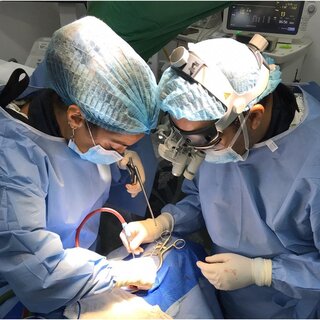brain tumor removal expert

Brain Tumor Removal Expert
Brain tumors are abnormal growths of cells within the brain that can be either benign (non-cancerous) or malignant (cancerous). They can arise from the brain tissue itself or spread from other parts of the body. Symptoms often vary widely, depending on the tumor's size and location, and may include headaches, seizures, changes in vision, or cognitive difficulties. Early diagnosis and treatment are crucial for improving outcomes, and advancements in surgical techniques, radiation therapy, and targeted therapies have significantly enhanced our ability to manage these complex conditions. There are different types of brain tumors:
Gliomas
Gliomas are the most common brain
and spinal cord tumors, comprising about half of all brain tumors. They
originate from the different supporting cells of the brain. The various types
of gliomas are:
|
a-Gliomas, glioneuronal tumors,
and neuronal tumors |
|
Adult-type diffuse gliomas |
|
Astrocytoma, IDH-mutant |
|
Oligodendroglioma, IDH-mutant,
and 1p/19q-codeleted |
|
Glioblastoma, IDH-wildtype |
|
Pediatric-type diffuse low-grade
gliomas |
|
Diffuse astrocytoma, MYB-
or MYBL1-altered |
|
Angiocentric glioma |
|
Polymorphous low-grade
neuroepithelial tumor of the young |
|
Diffuse low-grade glioma, MAPK pathway-altered |
|
Pediatric-type diffuse high-grade
gliomas |
|
Diffuse midline glioma, H3
K27-altered |
|
Diffuse hemispheric glioma, H3
G34-mutant |
|
Diffuse pediatric-type
high-grade glioma, H3-wildtype and IDH-wildtype |
|
Infant-type hemispheric glioma |
|
Circumscribed astrocytic gliomas |
|
Pilocytic astrocytoma |
|
High-grade astrocytoma with
piloid features |
|
Pleomorphic xanthoastrocytoma |
|
Subependymal giant cell
astrocytoma |
|
Chordoid glioma |
|
Astroblastoma, MN1-altered |
|
b-Glioneuronal and neuronal
tumors |
|
Ganglioglioma |
|
Desmoplastic infantile
ganglioglioma / desmoplastic infantile astrocytoma |
|
Dysembryoplasticneuroepithelial
tumor |
|
Diffuse glioneuronal tumor
with oligodendroglioma-like features and nuclear clusters |
|
Papillary glioneuronal tumor |
|
Rosette-forming glioneuronal
tumor |
|
Myxoidglioneuronal tumor |
|
Diffuse leptomeningeal
glioneuronal tumor |
|
Gangliocytoma |
|
Multinodular and vacuolating
neuronal tumor |
|
Dysplastic cerebellar
gangliocytoma (Lhermitte-Duclos disease) |
|
Central neurocytoma |
|
Extraventricularneurocytoma |
|
Cerebellar liponeurocytoma |
|
c-Ependymal tumors |
|
Supratentorialependymoma |
|
Supratentorialependymoma, ZFTA
fusion-positive |
|
Supratentorialependymoma, YAP1
fusion-positive |
|
Posterior fossa ependymoma |
|
Posterior fossa ependymoma,
group PFA |
|
Posterior fossa ependymoma,
group PFB |
|
Spinal ependymoma |
|
Spinal ependymoma, MYCN-amplified |
|
Myxopapillaryependymoma |
|
Subependymoma |
You will have a in depth discussion with your Dr Serge about the type of tumor you have and a treatment plan tailored to you will be formulated
GRADES OF GLIOMA
Grading of gliomas tells of how aggressive the tumor is. Grade 1 is the slowest growing; grade 4 the fastest growing. A grade 4 tumor is also called a glioblastoma.
SURGERY OBJECTIVES
The objective of surgery is total
removal of the glioma. Sometimes this is not possible because of the tumor’s location,
as there is often no clear boundary between healthy cells and a tumor.
Even when the tumor has been
removed, radiotherapy and chemotherapy are also needed to help prevent tumor
recurrence. Radiotherapy and chemotherapy administered by the radiation
oncologist are standard practice for grade 3 and grade 4 tumors
Meningioma
Meningiomas account for 20 percent
of cerebral tumours. The meningioma is a tumor of the covering of the brain and
spinal cord. They are generally benign tumours that grow on the surface of the
brain or base of the skull and compress the brain or spinal cord.
Surgery is the primary treatment and
many meningiomas can either be cured or controlled for the life of the patient.
While most are benign, a few are more aggressive and tend to recur. These are
called atypical meningiomas. They are rarely malignant but can regrow quickly.
For this reason, Dr Serge performs
regular MRI scans every one or two years after surgery. Occasionally, very
aggressive meningiomas may require radiotherapy. This can either be standard
radiotherapy or sometimes a localised form of radiotherapy – called
stereotactic radiosurgery – is used for some tumors (generally those less than
three centimetres).
The prognosis for meningiomas is generally excellent.
ACOUSTIC NEUROMA
This is a tumor of the eighth
cranial nerve. There are 12 pairs of cranial nerves and 90% of acoustic
neuromas arise from the balance portion of the eighth cranial nerve.
These tumours are called schwannomas
and they tend to present with hearing loss and increasing deafness. Surgery has
been the mainstay treatment and it usually results in a cure.
More recently, stereotactic
radiosurgery has been used for small (less than 3cm) tumors.
